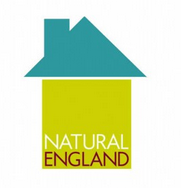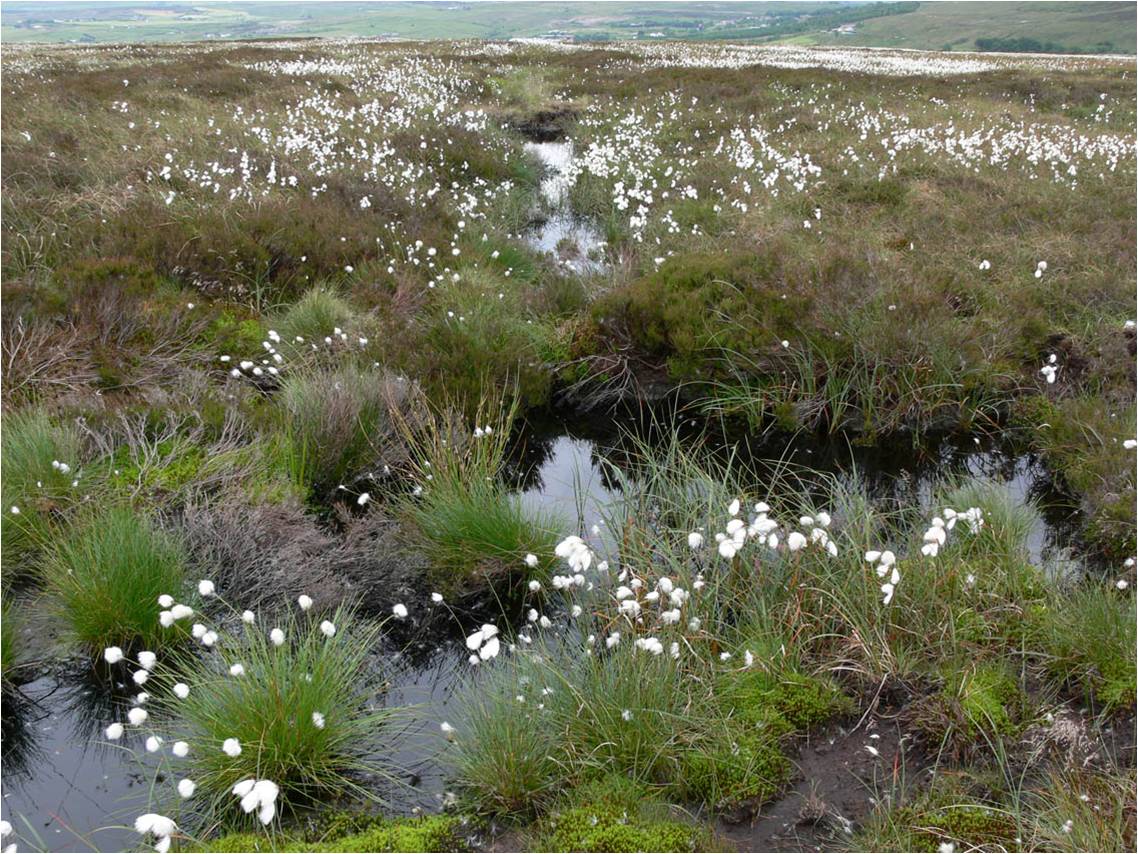It’s a rare enough thing these days for new SSSIs to be notified – and now the West Pennine Moors has been notified. Actually, it’s already a day old.
Very wittily the document explaining this points out that it is a 7600+ha extension to three existing small SSSIs.
 Read the documentation and it seems a no-brainer that this area of upland blanket bog etc should be notified and protected but it has taken decades for this to come about. It has taken an awful lot of hard work from a small number of locals over more than a decade to finish off the task. It really shouldn’t be such a struggle to get such an obviously important upland site notified. And that notification should, fingers crossed, protect it from damaging activities such as windfarm developments (of which I generally approve but location is everything) and built development.
Read the documentation and it seems a no-brainer that this area of upland blanket bog etc should be notified and protected but it has taken decades for this to come about. It has taken an awful lot of hard work from a small number of locals over more than a decade to finish off the task. It really shouldn’t be such a struggle to get such an obviously important upland site notified. And that notification should, fingers crossed, protect it from damaging activities such as windfarm developments (of which I generally approve but location is everything) and built development.
SSSI status is not a guarantee of future protection, and actually, nor should it be, but it is a clear and firm signal to developers that this site will be difficult to change and they might be better off looking elsewhere to meet their needs. Unless you think that no land should be off limits, that is what the planning system and the designated site system is for.
So let’s raise a glass to the new West Pennine Moors SSSI and to those (who you notice I am not naming) who have worked to reach this day (or yesterday actually, but every day going forward too).
But whilst celebrating this site, let us also reflect on the fact that there are many more sites out there that need this form of protection. We are living with a protected area network that is decades out of date. It was set up to protect some wildlife – rich places – from being lost although now it seems that almost all of the richest places are already SSSIs.
But the wildlife NGOS should be arguing for a much larger area of land to be designated/notified. How about twice the current area of England receiving wildlife protection by the end of the 25-year government nature plan? The quality of the general countryside has declined so much since SSSIs appeared on the scene that we now need a much wider network of protected areas to save nature.
And we know that a much bigger network would allow more species to adapt to the inevitable impacts of climate change – a factor of huge importance that wasn’t even on the radar when SSSIs were dreamt up.
Why aren’t the Wildlife Trusts crying out for proper protection for the network of local wildlife sites, the best of which are now elevated to near the rank of many SSSIs decades ago? Shouldn’t the Sanctuary site have a proper national statutory designation that labels it as special for ever? Shouldn’t Fineshade Wood be protected for its excellence these days?
As a nation we need more ambition to save wildlife, and that won’t come from Defra, nor these days (sadly) from Natural England, so it should be coming from the wildlife NGOS but it is not.
And a last thought, all that nonsense about Gate Zero just makes me fear that the West Pennine Moors’ gain might be another deserving site’s loss. I’m glad that this blog has been able to help, just a little bit, to shine a light on the value of this site, but my fear is that that process might just have disadvantaged another site in these days when kindness to nature is rationed so sparingly. Can we have some more Sir? Please Sir?
Previous blogs on the West Pennine Moors: Natural England seem to have forgotten the West Pennine moors, 2 April 2015; West Pennine Moors, 12 June 2015; West Pennine Moors Again, 22 June 2015; Dear Natural England, 22 June 2015; Fair do’s, 22 June 2015; Gate Zero and the West Pennine Moors, 21 September 2015; What the frack? West Pennine Moors, 28 September 2015; A barn of special scientific interest? West Pennine Moors, 28 September 2015; West Pennine Moors complaint to NE over their response, 28 September 2015; Gate Zero and the West Pennine Moors, 5 October 2015, News: West Pennine Moors heading for notification, 20 January 2016, West Pennine Moors, 10 October 2016.
[registration_form]
Does this mean they will have to build roads all over the moors in order to get people and materials to them for “restoration?”
Gerard – I really don’t think so.
Gerard
An application for a mega visitor centre with enormous carpark and compostable sanitation will soon be lodged and of course it will require a new A(M) grade access roads from the M61, M65 and M66 to cope with the increased traffic that the new Morrisons and Next and Harry Ramsdens outlets at the new Belmont retail park will generate
Wonderful news.
Interested to see on the list of things that need NE consent, the use of lead shot is listed. This means that the use of lead shot is seen as potentially damaging to the SSSIs features of interest. I wonder how many other SSSI designations have lead shot listed as a PDO?
A fundamental problem in getting more protected areas is the current sectoral approach to land use: if one, conservation wins, another, farming loses – and under the current CAP regime the alternative land use has to pay off the subsidy – through higher land prices – and then doesn’t get the income. In 2007 David Milliband described this situation as a ‘zero sum game’ and he was right.
The alternative put forward by the Natural Capital Committee tries to value the present day values of what land produces – so, for example, it shows that the greatest value from our upland bogs is carbon capture. No doubt some traditional conservationists will be outraged that the lead value for somewhere like the West Pennine SSSI might not be wildlife, but it doesn’t take long to work out that the interests of bog for carbon and wildlife align rather well, and having got there the next step – paying (land managers) for the actual values we need today rather than paying off sheep farming, which comes way down the list, first before you can even start to conserve the resource is a win-win – for the environment and for land managers.
What? No “well done” to the NE staff for making this happen? They do still do good work you know! Credit where its due…
Err not wishing to detract from the excellent news, but the notification is the beginning of a process which ends in its being confirmed by Natural England board. There is a consultation process now running for 4 months. Then there will be an opportunity for objectors (and supporters) to orally present their views to the Natural England board. After which the Board will either approve the notification in toto, amend it, or reject it.
Thanks Mark for mentioning the ongoing campaign to get Fineshade Wood designated as SSSI. (More detail here: http://www.fineshade.org.uk/sssi) The latest development was in May when the Chief Exec. of Natural England wrote to our MP saying:
” We have explained that we will place Fineshade Wood on a list of sites for possible further investigation for future designation as a Site of Special Scientific Interest, but due to our existing designations programme for areas, sites and trails, we will not be taking any further action in the short term on investigating it. Designations can take a considerable period of time to progress from investigation and data gathering, through liaison with interested parties and final confirmation depending on the size and complexity of the site.”
The West Pennine Moors case shows just what he meant by “Designations can take a considerable period of time to progress”! But we’ll be joining in raising a glass to those who fought for so long with persistence and tenacity to bring about this result. It’s a lesson to us all.
Excellent news indeed.
Could it be interpreted from NE CE letter that NE are unable to cope with the workload (I’m sure we all have areas which would fit SSSI selection criteria)? If so then what is the solution? We need a system which is fit for purpose and delivers in a timely manner so that deterioration or development of sites is stemmed?
Great news, and thanks for the mention of The Sanctuary LNR in Derby, Mark.
Sadly, Derby City Council are still sulking two years after abandoning their hair-brained idea to build a bicycle racing track on top of the bird reserve. They steadfastly refuse to repair the damage they did to it, so leaving skylark and snipe habitat just heaped up piles of concrete and rubble. Elsewhere on the reserve, however, the LRPs continue to breed and wildlife thrives.